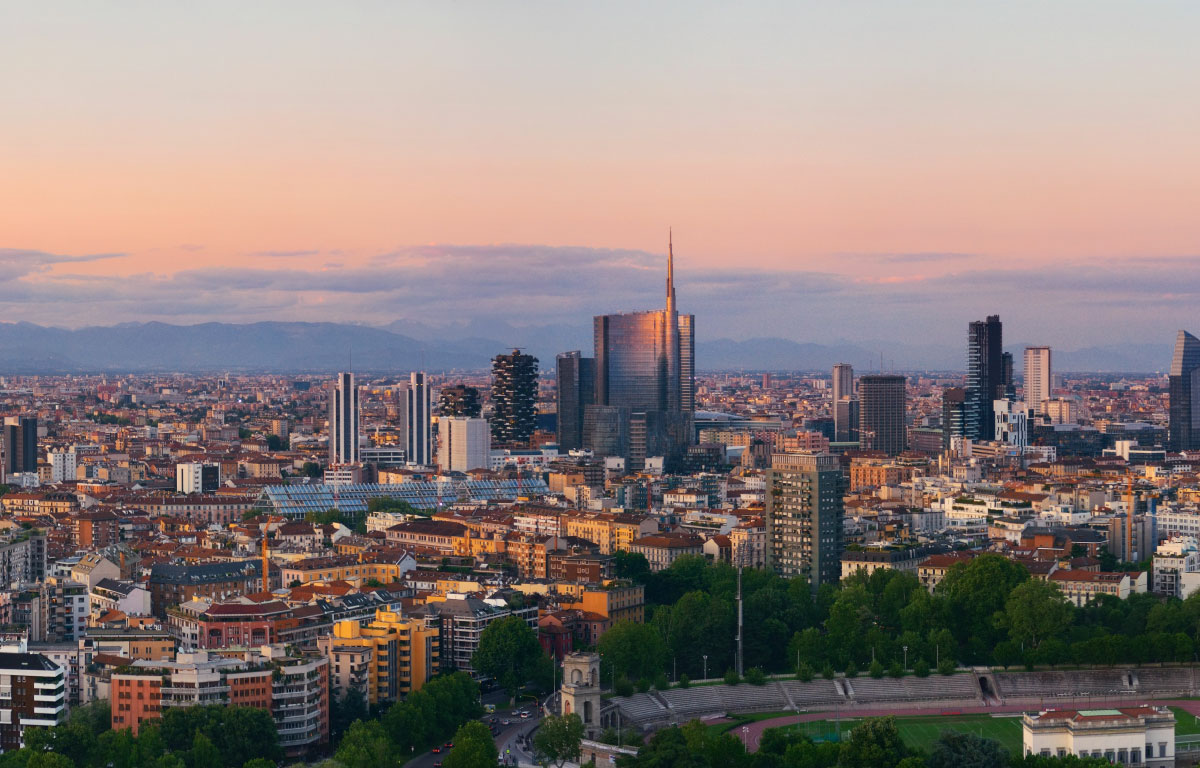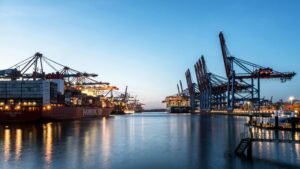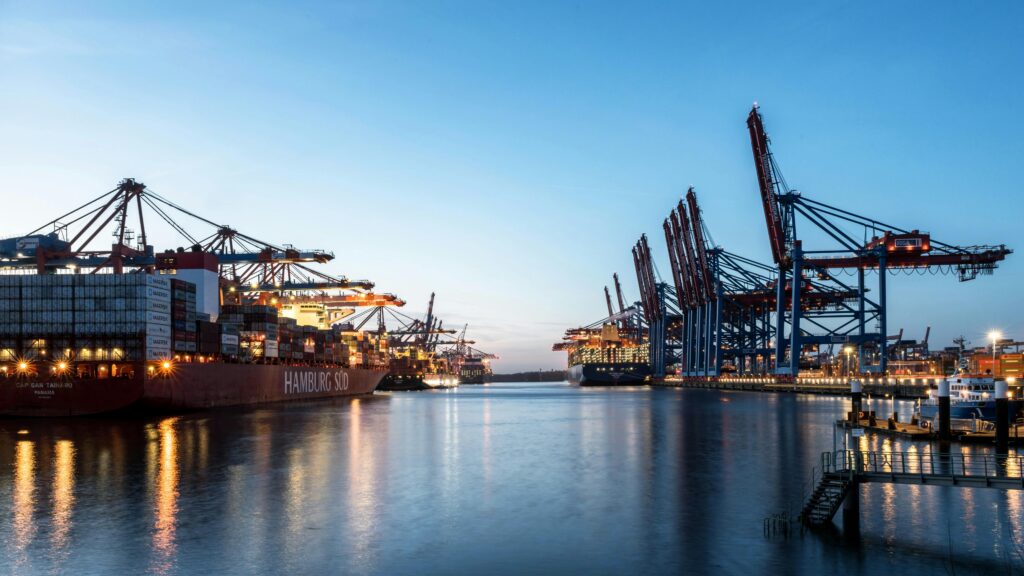The location does the trick
With its numerous container ports, proximity to Africa, the Suez Canal and the Strait of Gibraltar, Italy offers excellent opportunities for export and import by sea freight. In 2021, the port of Gioia Tauro in Calabria was the ninth-largest container port in Europe in terms of throughput of around 3.1 million TEU.
But Italy is also easily accessible by air. Malpensa Airport (MXP)/Milan, near which Forto has opened its new Italy office, is the second largest in the country after Leonardo da Vinci – Fiumicino Airport (FCO) in Rome and the largest in terms of air freight.
Italy as an exporting country
Italy’s main exports in 2019 to 2021 by value included pharmaceuticals, motor vehicles – and last but not least, fashion. In 2021, the fashion industry in Italy was able to bring its export volume back to roughly the same level as in 2019, compared to a decline in the Corona year of 2020. Italy exported more textiles in 2021 than it imported.
Furthermore, what comes to mind when you think of Italy? Of course – pasta! Italy is the world’s largest exporter of pasta and processed tomatoes. About 30% of all pasta in the world comes from Italy. But pasta is also in high demand domestically: Italians consume about 23.5 kg of it per capita each year, ranking first in the world. In addition to pasta, unglazed ceramics are one of the country’s export hits. The Italians are the world’s leading exporters in this sector, as they are for tanned cattle and horse hides.
Which imported products play a significant role in Italy?
Italy needs energy. It is no wonder that the country’s main import goods include fuels and oil. However, Italy also imports motor vehicles as well as electrical appliances, i.e. consumer goods, in large quantities, as well as chemicals and pharmaceutical items.
In 2020, Italy was the world’s largest importer of electricity, hand-rolling tobacco, and wool and combed wool yarns, which are an important raw material for Italy’s fashion industry.
Italy's most important trading partners
In 2021, Italy exported goods worth around $610 billion, while the value of imports was around $550 billion – an export surplus of around $60 billion. Italy exported the most goods to Germany, followed by France and the USA. Germany also accounted for the largest share of imports to Italy, ahead of France and China. With the exception of China and the USA, Italy traded primarily with countries in the European region.
Germany plays a special role in Italian trade, with a share in Italy’s exports of around 13% and in its imports of around 16%. By comparison, France, Italy’s second-largest importing country, accounts for 8 % of all Italian imports – half of what Germany supplies to Italy. So trade relations between Germany and Italy are strong.
There are also growing trade ties with the African continent, not least because of geographic proximity: Compared to 2019, the total trade between Italy and Africa increased by 8.6% in 2021 to a total of 42.1 billion euros. The fact that trade with Africa is growing is interesting for traders in all states in the EU. This is because imports and exports can be easily organized through Italy, especially due to its geographical proximity to North Africa.
Italy's transport routes
Most goods (more than 60%) in Italy are transported by truck, and within Italy, the figure is as high as 80%. One of the reasons: Four of Europe’s nine transnational transport corridors pass through Italy. This makes Italy an important freight traffic hub within Europe. In particular, road transport dominates freight traffic with the two most important trading partners, Germany and France. Compared to the pre-Corona year 2019, road freight journeys increased by 2.5% in 2021 – especially journeys over the Alpine passes recorded large increases. By 2030, however, freight traffic is expected to shift increasingly to rail, so that 25-30% of freight should then be transported by rail, and by 2050 the figure should be as high as 50%.
Sea Freight
Italian ports handled around 11 million TEU in 2021, 4.8% more than in 2019. The port of Gioia Tauro led the way in container handling – accounting for around 3 million TEU alone. In addition, the ports of Genoa and La Spezia were particularly popular. The ports in southern Italy, also known as the Mezzogiorno, are important because of their location on routes to the Middle East and the Far East. Companies in the Mezzogiorno handle around 60% of their imports and exports by sea, and almost 50% of all Italian maritime traffic passes through the ports of southern Italy. China is one of Italy’s most important trading partners. Italy plays a key role in the maritime New Silk Road initiative, which promotes trade with China.
Air Freight
In terms of value as well as the volume of goods transported by air freight, Italy carried 7% of international air freight in the EU as of 2019. That doesn’t sound like much, but when you consider that Italy’s largest airport for air cargo, Milan-Malpensa, alone saw around 741,770 tons of goods go out and come in in 2021, it puts that figure into perspective. In 2019 – and thus before both the pandemic and the Ukraine war – most cargo flights from Malpensa went to the U.S., Qatar, Russia, Hong Kong and China, and the United Arab Emirates. Compared to the pandemic year of 2020, the volume of air cargo across Italy increased sharply again in 2021 – by nearly 33%.
Are there country-specific regulations for imports and exports (customs duties, insurance, other specific documents or requirements)?
As an EU member state, Italy is subject to the EU’s common import regulations. Thus, free movement of goods applies to trade within the EU. External customs tariffs are applied to all products imported from non-EU countries. These tariffs can vary greatly – depending on the type of goods. The following documents are required for customs clearance from non-EU countries:
- Commercial invoice
- Packing list
- Certificate of origin
- Bill of Lading
VAT of 22% is also levied on most goods sold in Italy, regardless of whether the goods are imported or produced locally. Special permits must be obtained to import certain categories of products, such as foodstuffs.
Are there regional, seasonal or cultural characteristics in Italy that influence trade and logistics?
Italy in summer is not only associated with high temperatures in northern Europe. Italian children, for example, have school vacations from June to September, and in August, the hottest time of the year, almost all of Italy goes on vacation. And they go where it is cooler or at least where they can cool off, i.e. in the mountains or by the sea.
Around Ferragosto, August 15, everyone who can take the day off. On this day, the Catholic Church celebrates the Assumption of the Virgin Mary. But ultimately Ferrogosto, which is one of Italy’s most important holidays, dates back to the Roman Emperor Augustus and his conquest of Egypt. The name “Ferragosto”, which is derived from Feriae Augusti, the feast day of Augustus, also bears witness to this.
No wonder August is a challenge for exporters and importers. It is not always easy to communicate with local partners. Shipments at this time should therefore be planned as far in advance as possible. The same applies to the major Christian holidays such as Easter and Christmas, although Good Friday is not a public holiday in Italy.
What is Italy's level of digitization?
Italy ranks only 18th out of 27 EU member states in the EU 2022 Digital Economic and Society Index (DESI) – even though Italy is the third-largest economy in the EU. However, the Covid 19 pandemic has accelerated digital transformation in Italy as well. According to ICity Rank 2020, the cities of Florence, Bologna and Milan in particular became much more digital during the pandemic. But: There are major differences in the digital transformation between the north and south of Italy. While digitization is progressing vehemently in the north, two-thirds of the southern capitals are still lagging behind in the ICity Rank.
According to DESI, 60% of small and medium-sized enterprises in the economy are using digital services, and cloud services in particular are becoming increasingly popular. With a six-point plan (Piano Nazionale di Ripresa e Resilienza) published in 2021, the Italian government aims, among other things, to improve national competitiveness in logistics by creating a digital system that will link public and private facilities for the transport of goods.
How strong is public awareness of sustainability?
While Italian consumers are also paying increasing attention to the environment, sustainability is still a stepchild in Italian consciousness compared to other countries. However, a 2019 survey by Istituto Piepoli found that over 60% of respondents believe it is important for companies to reduce their emissions of pollutants and CO2.
However, Italy ranks 15th on the Earth.org organization’s Global Sustainability Index, which puts it in one of the top spots (by comparison, Germany ranks 6th). One of the reasons: Italy has invested heavily in renewable energy, increasing the share of renewables in energy sources used from 6% to 15% between 2007 and 2020. With emissions of 5 tons of CO2 per capita, Italy was below the average of OECD countries in 2021.
However, this does not mean that there is not more to be done in terms of sustainability in the “Italian consciousness”: For example, Italy’s waste production of around 496 kg per capita was average in a comparison of OECD countries in 2021.
Conclusion: Why the Italian market is so interesting for logistics
Italy is the third largest economy in the EU – that alone is a factor that should not be underestimated. The good infrastructure with a rail network of around 17,000 km, around 7,000 km of freeway, more than 30 major airports and 14 major seaports makes it easy to transport goods. E-commerce is also becoming increasingly popular in Italy. Estimates predict annual growth of around 16.5 % by 2025, not least because Italy still has some catching up to do in this branch of trade.
Its geographic location, with its proximity to Africa, the Suez Canal and the Strait of Gibraltar, makes Italy a promising player in transportation to and from Europe. The connection to the Silk Road Initiative does the rest to make Italy interesting for logistics.
Only the digitalization of both the public and private sectors, which has so far been less pronounced in comparison, can make imports and exports to and from Italy more difficult.
Forto is filling a gap here with its Italy office: The high transparency of the supply chain through Forto’s digital platform and the increase in efficiency has already convinced numerous customers in Italy.
Forto in Italy - a logical consequence
Italy’s logistics industry will continue to grow. So it goes without saying that Forto is also present in Italy and is driving the digitalization of the industry in order to simplify processes in the supply chains and make them more efficient. With offices in Milan and Naples and contacts in many regions, we are sending out a signal that we can be reached not only digitally, but also completely “analog”. Our experienced and dedicated logistics experts know the Italian market like the back of their hand and help customers based there quickly and directly with all their logistics needs.
But of course, we are also happy to support you when exporting goods to Italy. Our multimodal logistics services ensure that your supply chain runs smoothly, even in difficult times. Disruptions in the supply chain can be proactively identified and resolved with the help of our digital platform. Forto’s innovative technology gives you the best transportation solution every time, in FCL, LCL, air and rail freight.
To make the world a little bit better and “greener”, we at Forto put a lot of emphasis on sustainable logistics solutions and offer CO2 offsetting and emissions reduction during transportation. Our local team will be happy to advise you on digital sustainable logistics solutions. Get in touch with us. We look forward to hearing from you!










